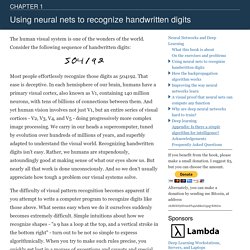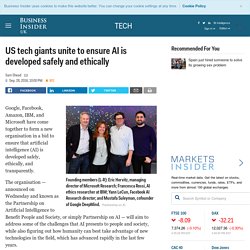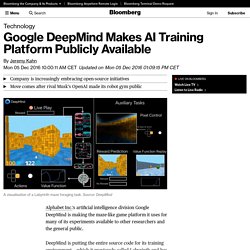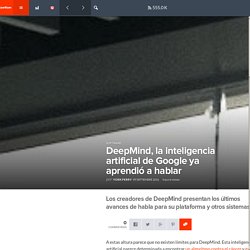

Neural networks and deep learning. Neural networks are one of the most beautiful programming paradigms ever invented.

In the conventional approach to programming, we tell the computer what to do, breaking big problems up into many small, precisely defined tasks that the computer can easily perform. By contrast, in a neural network we don't tell the computer how to solve our problem. Instead, it learns from observational data, figuring out its own solution to the problem at hand. Automatically learning from data sounds promising. However, until 2006 we didn't know how to train neural networks to surpass more traditional approaches, except for a few specialized problems.
The purpose of this book is to help you master the core concepts of neural networks, including modern techniques for deep learning. A principle-oriented approach This means the book is emphatically not a tutorial in how to use some particular neural network library. A hands-on approach It's rare for a book to aim to be both principle-oriented and hands-on.
Neural networks and deep learning. The human visual system is one of the wonders of the world.

Consider the following sequence of handwritten digits: Most people effortlessly recognize those digits as 504192. That ease is deceptive. In each hemisphere of our brain, humans have a primary visual cortex, also known as V1, containing 140 million neurons, with tens of billions of connections between them. And yet human vision involves not just V1, but an entire series of visual cortices - V2, V3, V4, and V5 - doing progressively more complex image processing. The difficulty of visual pattern recognition becomes apparent if you attempt to write a computer program to recognize digits like those above. Uk.businessinsider. Founding members (L-R): Eric Horvitz, managing director of Microsoft Research; Francesca Rossi, AI ethics researcher at IBM; Yann LeCun, Facebook AI Research director; and Mustafa Suleyman, cofounder of Google DeepMind.

Partnership on AI Google, Facebook, Amazon, IBM, and Microsoft have come together to form a new organisation in a bid to ensure that artificial intelligence (AI) is developed safely, ethically, and transparently. The organisation — announced on Wednesday and known as the Partnership on Artificial Intelligence to Benefit People and Society, or simply Partnership on AI — will aim to address some of the challenges that AI presents to people and society, while also figuring out how humanity can best take advantage of new technologies in the field, which has advanced rapidly in the last few years.
During the call, the consortium dismissed concerns that this was effectively an attempt by the tech industry to self-regulate AI without government involvement. Loop AI Labs Cognitive Computing. Google DeepMind Makes AI Training Platform Publicly Available - Bloomberg. Alphabet Inc.’s artificial intelligence division Google DeepMind is making the maze-like game platform it uses for many of its experiments available to other researchers and the general public.

DeepMind is putting the entire source code for its training environment -- which it previously called Labyrinth and has now renamed as DeepMind Lab -- on the open-source depository GitHub, the company said Monday. Anyone will be able to download the code and customize it to help train their own artificial intelligence systems. They will also be able to create new game levels for DeepMind Lab and upload these to GitHub. The decision to make this AI test bed available to the public is further evidence of DeepMind’s decision to embrace more openness around its research. Universe is rolling out with 1,000 different titles and training environments and the company called on video game developers to give OpenAI permission to include their games in future. Loop AI Labs Cognitive Computing. Loop AI Labs Cognitive Computing.
COCO - Common Objects in Context. TensorFlow. Microsoft Azure Machine Learning Studio. Amazon Machine Learning – Análisis predictivo con AWS. Deep Learning: qué es y por qué va a ser una tecnología clave en el futuro de la inteligencia artificial. Desde los años 50 del siglo pasado y hasta hace muy pocos años el terreno habitual de la Inteligencia Artificial (IA) avanzada era mayoritariamente el laboratorio de investigación y la ciencia ficción.

A excepción de casos contados, la práctica totalidad de sistemas con una inteligencia similar a la humana han aparecido en películas futurísticas u obras como las de Isaac Asimov. Sin embargo, este panorama está cambiando radicalmente en los últimos años. El gran impulso tecnológico al que solemos referirnos bajo el término Big Data ha revolucionado el entorno empresarial. Deep Learning: qué es y por qué va a ser una tecnología clave en el futuro de la inteligencia artificial. DeepMind - Xataka. DeepMind - Xataka. DeepMind, la inteligencia artificial de Google ya aprendió a hablar. A estas altura parece que no existen límites para DeepMind.

Esta inteligencia artificial parece determinada a encontrar un algoritmo contra el cáncer y ganar todas las partidas de Go en la historia: Pero encima de todo resulta que también ya aprendió a hablar. De acuerdo con un anuncio del propio equipo creador de DeepMind, ahora han logrado desarrollar a partir de su propia plataforma un programa de habla para su creación y cualquier otro sistema computacional a la altura, al que han bautizado como WaveNet.
Deep learning - Wikipedia. Branch of machine learning Deep learning (also known as deep structured learning or differential programming) is part of a broader family of machine learning methods based on artificial neural networks with representation learning.

Learning can be supervised, semi-supervised or unsupervised.[1][2][3] Deep learning architectures such as deep neural networks, deep belief networks, recurrent neural networks and convolutional neural networks have been applied to fields including computer vision, speech recognition, natural language processing, audio recognition, social network filtering, machine translation, bioinformatics, drug design, medical image analysis, material inspection and board game programs, where they have produced results comparable to and in some cases surpassing human expert performance.[4][5][6] Artificial neural networks (ANNs) were inspired by information processing and distributed communication nodes in biological systems. Definition[edit] Overview[edit] History[edit] Deep learning - Wikipedia.